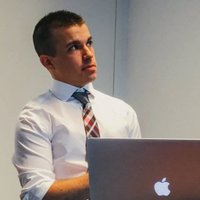
a.w.
@awarr9
ID: 4046794709
26-10-2015 14:41:27
11 Tweet
12 Followers
5 Following





🚨🚨🚨#TWEEPRINT TIME🚨🚨🚨 @leaduncker and I are thrilled to share our investigation of motor cortical dynamics using optogenetic and electrical perturbations, now on bioRxiv Neuroscience biorxiv.org/content/10.110… Full thread at djoshea.notion.site/Twitter-Thread…


With co-authors @xulunasun, Saurabh Vyas, Eric Trautmann, Ilka Diester, Charu Ramakrishnan, with Krishna Shenoy and Maneesh Sahani, and essential support from Karl Deisseroth and the lab (Ofer Yizhar 💔, liefefenno!). Thanks to A Numrikko, I Ozden, J Wang for co-ax optrodes!




![Scott Linderman (@scott_linderman) on Twitter photo 📢 Happening Today! 📢
Come learn about SIXO, our method for smoothing SMC which received an oral at #Neurips2022 (poster 1040, Thursday 4pm). SIXO provides a generic and powerful way to leverage future information when proposing and resampling particles in an SMC sweep. 🧵[1/N] 📢 Happening Today! 📢
Come learn about SIXO, our method for smoothing SMC which received an oral at #Neurips2022 (poster 1040, Thursday 4pm). SIXO provides a generic and powerful way to leverage future information when proposing and resampling particles in an SMC sweep. 🧵[1/N]](https://pbs.twimg.com/media/Fi59Yi3WIAIxBTr.jpg)



